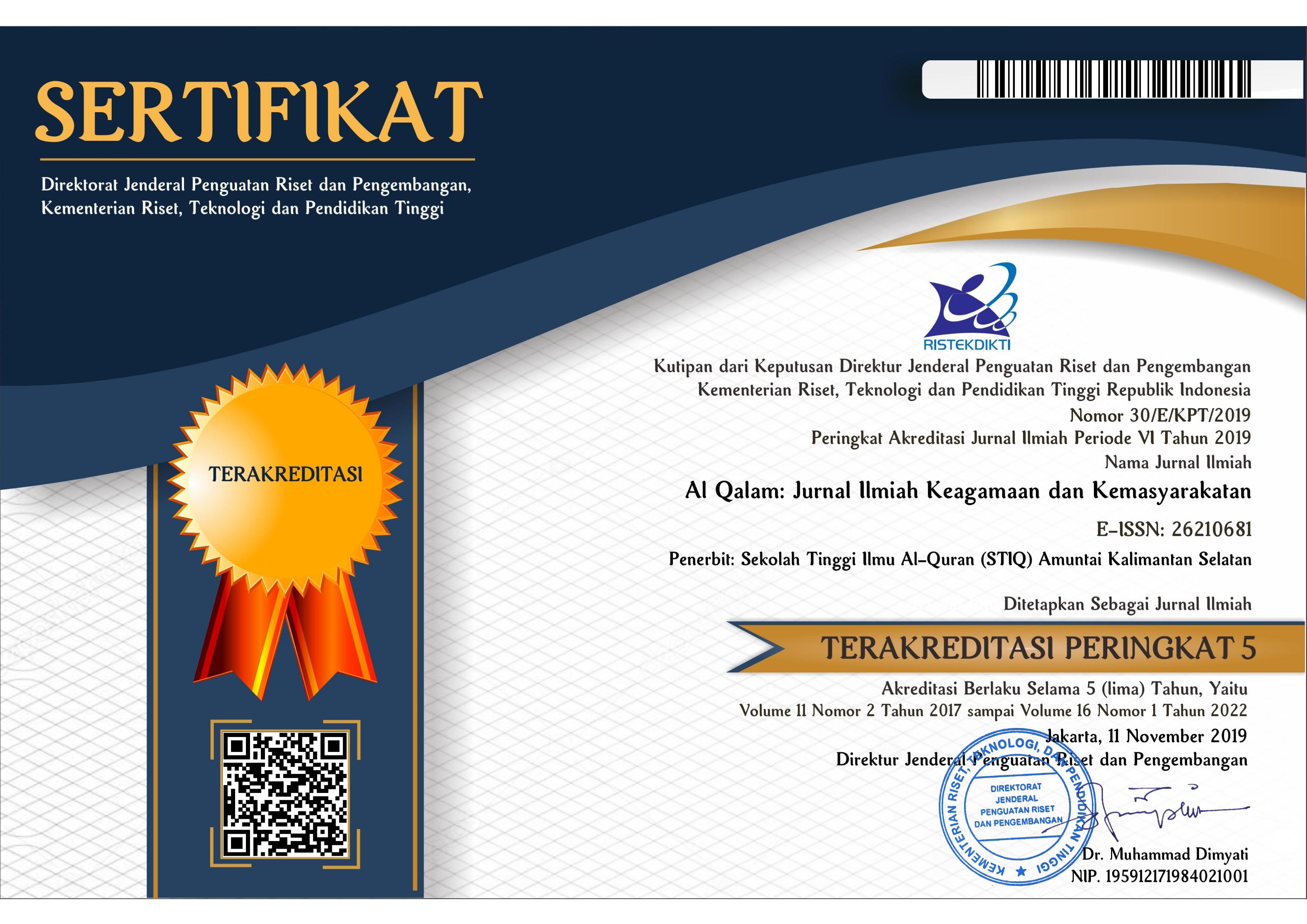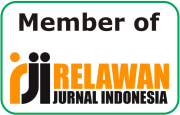The Effect of Intrapersonal Communication, Religious Content, and Understanding of Religious Moderation Values on the Spiritual Behavior of Virgo Fidelis Senior High School Students in Bawen
Abstract
This study aims to analyze the influence of interpersonal communication, religious content, and understanding of religious moderation values on students' spiritual behavior. This study was conducted using a quantitative research method. The subjects of this study were students of SMA Virgo Fidelis Bawen with a sample of 99 students. Data were collected through a questionnaire with a Likert scale of 1-5. The results of the validity and reliability tests of the instrument showed that the instruments used in this study were valid and reliable. Data were analyzed using descriptive statistical analysis and regression analysis. The normality test showed that the data on the four research variables were normally distributed. The multicollinearity test showed that there were no symptoms of multicollinearity in the independent variables. The heteroscedasticity test showed that the distribution of points on the scatter plot did not have a clear pattern so that it could be interpreted that there was no heteroscedasticity. Thus, all the requirements for regression analysis were met. The results showed that intrapersonal communication had a significant effect on students' spiritual behavior with a coefficient of determination (R2) of 0.488 (sig. 0.000). Religious content has a significant effect on students' spiritual behavior with a coefficient of determination (R2) of 0.585 (sig. 0.000). Understanding of religious moderation has a significant effect on students' spiritual behavior with a coefficient of determination (R2) of 0.821 (sig. 0.000). Intrapersonal communication, religious content, and understanding of religious moderation are proven to have a significant simultaneous effect on students' spiritual behavior. This is indicated by the results of the F-test of 194.393 with a significance of 0.000. Intrapersonal communication has an effective contribution (SE) of 4% and a relative contribution (SR) of 5%, religious content has an effective contribution (SE) of 15% and a relative contribution (SR) of 17%, while understanding of religious moderation has an effective contribution (SE) of 55% and a relative contribution (SR) of 64%. The equation of the regression line formed is Y = 0.080X1 + 0.948X2 + 0.700X3 – 25.547.
Keywords
Full Text:
PDFReferences
Abidin, A.Z. “Nilai-Nilai Moderasi Beragama dalam Permendikbud No. 37 Tahun 2018.” JIRA: Jurnal Inovasi dan Riset Akademik 2, no. 5 (2021): 729–36. https://doi.org/10.47387/jira.v2i5.135.
Astutik, W., D. Indriyani, and S. Kholifah. “Hubungan Perilaku Spiritual dengan Perilaku Berpacaran pada Remaja di SMAN 1 Jenggawah Kabupaten Jember.” The Indonesian Journal of Health Science 8, no. 2 (2017): 183–90.
Azhari, P., J. Shinta, A. Darlis, A. Nurfadillah, and S. Ramadhan. “Konsep Penguatan Profil Pelajar Pancasila (Analisis Dampaknya terhadap Sikap Moderasi Beragama Peserta Didik di Sekolah.” Jurnal Pendidikan Agama Islam 7, no. 2 (2024): 55. https://doi.org/10.52434/jpai.v1i2.2691.
Febri, H., A. Ndraha, E. Marampa, and S. Gani. “Peran Gembala dalam Membentuk Karakter Spiritualitas Remaja Kristen.” Jurnal Budi Pekerti Agama Kristen dan Katolik 2, no. 3 (2024): 17–34. https://doi.org/10.61132/jbpakk.v2i3.564.
Ferlitasari, R., and dan E.Rosana Suhandi. “Pengaruh Media Sosial Istagram terhadap Prilaku Keagaamaan Remaja.” Sosio Religia: Jurnal Sosiologi Islam 1, no. 2 (2020): 2–3.
Johnson. “Intrapersonal Communication as a Catalyst for Spiritual Growth.” Spirituality and Psychology Journal 12, no. 4 (2018): 567–84.
Luthfi, M., S. Kholil, L. Lubis, and A. T. Sikumbang. “The Utilization of Religious Content in Social Media for the Alteration Adolescent’s Islamic Behaviour.” Dialogia 20, no. 2 (2022): 460–82. https://doi.org/10.21154/dialogia.v20i2.4838.
Mufida, U.I. Implementasi Google Classroom dalam Pembelajaran Sejarah Jarak Jauh di SMA Virgo Fidelis Bawen. Salatiga: Universitas Kristen Satya Wacana, 2020.
Shodikun, S., M. Hufron, and M. R. Subhi. “Penggunaan Media Sosial sebagai Alat Strategis dalam Pendidikan Agama Islam.” Al-Mikraj: Jurnal Studi Islam dan Humaniora 4, no. 1 (2023): 524–35. https://doi.org/10.37680/almikraj.v4i1.3982.
Sugiyono. Metode Penelitian Kuantitatif, Kualitatif, dan R&D. Bandung: Alfabeta, 2021.
Tibo, P., and N. A. B. Sembiring. “Komunikasi Efektif Orang Tua dan Kaum Remaja di Era Digital dalam Rangka Pendidikan Moral.” Jurnal Darma Agung 32, no. 5 (2024): 34–42.
Yunalia, E.M., and A. N. Etika. “Analisa Kecerdasan Emosional Remaja Tahap Akhir Berdasarkan Jenis Kelamin.” Jurnal Keperawatan Jiwa 8, no. 4 (2020): 477–84.
DOI: http://dx.doi.org/10.35931/aq.v19i3.4999
Refbacks
- There are currently no refbacks.
Copyright (c) 2025 Adi Nugroho Susanto Putro, Rahmad Setyoko, Danang Try Purnomo, Dwiyono Putranto

This work is licensed under a Creative Commons Attribution 4.0 International License.
Al Qalam: Jurnal Ilmiah Keagamaan dan Kemasyarakatan
index by:
Publish by:
Sekolah Tinggi Ilmu Al-Qur'an Amuntai
Contact us:
Address: Jl. Rakha Pakapuran, Amuntai Utara
Kabupaten : Hulu Sungai Utara
Kode Pos : 71471
Provinsi : Kalimantan Selatan
Telephone : 085251613000
Email: hafizhihusinsungkar@gmail.com

This work is licensed under a Creative Commons Attribution 4.0 International License


